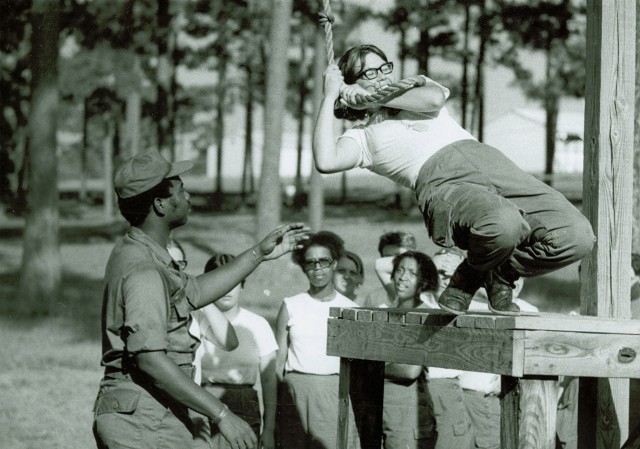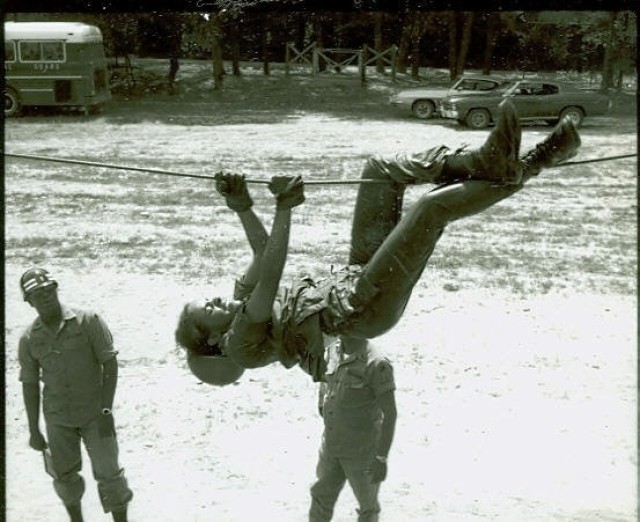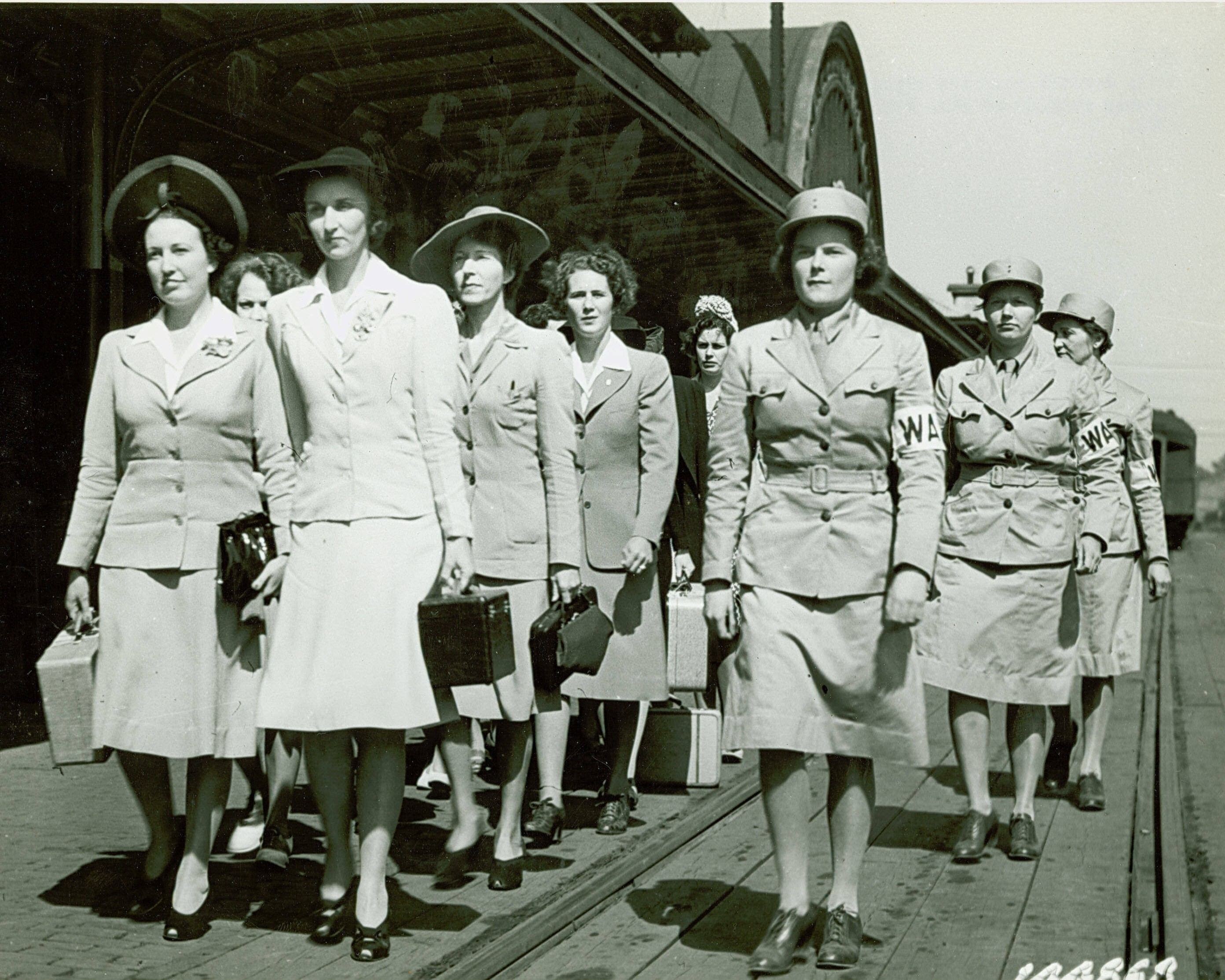Thirty years ago on Oct. 20, 1978, President Jimmy Carter signed Public Law 95-485 disbanding the WomenAca,!a,,cs Army Corps (WAC) as a separate corps within the United States Army following thirty-six years of dedicated service.
Originally established as the WomenAca,!a,,cs Army Auxiliary Corps (WAAC) by President Franklin D. Roosevelt during World War II, the WAC went through many different organizational statuses throughout its history.
Congresswoman Edith Nourse Rogers of Massachusetts introduced legislation in May 1941 to establish a womenAca,!a,,cs auxiliary to the U.S. Army based on the premise that the addition of womenAca,!a,,cs labor would Aca,!A"free a man for combat,Aca,!A? if and when the United States entered the war.
Even though Rogers compromised on the issues of womenAca,!a,,cs military status and benefits, the legislation languished in Congress until the United States was attacked by Japan at Pearl Harbor in December.
In January 1942, Rogers added an amendment to her bill that would grant women the same military status and benefits as men. Bitterly contested in Congress, the bill only passed after it was decided that women would not be given military status, and on 15 May 1942 President Roosevelt signed Public Law 77-554 establishing the WomenAca,!a,,cs Army Auxiliary Corps.
Recognizing that the United States Army could not provide benefits to the women stationed overseas and that the auxiliary system had proved to be cumbersome, General George C. Marshall, Chief of Staff of the Army, requested that Congress give women military status for the duration of the war.
In January 1943, Congresswoman Rogers and Oveta Culp Hobby, Director of the WAAC, drafted a bill which was endorsed by General Marshall and introduced into Congress. Even though military status was again contested in the House, the bill eventually passed, and President Roosevelt signed Public Law 78-110 on July 1, 1943, establishing the WomenAca,!a,,cs Army Corps.
Even though the WAC provided the Army dedicated and loyal service in World War II, it was scheduled to disband at the end of hostilities.
No contingencies were developed to maintain the existence of the WomenAca,!a,,cs Army Corps for service in the postwar Army or future conflicts. This was immediately recognized as an oversight by many senior Army leaders, to include Generals George Marshall, Douglas MacArthur, and Dwight Eisenhower, who had come to depend on the WACs assigned to their commands. General MacArthur called WACs, Aca,!A"my best soldiers,Aca,!A? adding that Aca,!A"they worked harder, complained less, and were better disciplined than men.Aca,!A? After many years of public debate and in response to a worsening international environment, Congress finally approved regular and reserve component status for women. On June 12, 1948, President Harry S. Truman signed Public Law 625, the WomenAca,!a,,cs Armed Services Integration Act.
During the next twenty years, the WAC followed the ArmyAca,!a,,cs pattern of recruitment, whereby in peacetime a small well-trained force of officers and enlisted members were maintained and during wartime a recall of reserve soldiers to active service was employed as well as increased recruitment.
These fluctuations remained the pattern until the early 1970s, when in response to President Richard NixonAca,!a,,cs intention to reduce and eventually eliminate the drafting of men a plan was developed to expand the WAC.
The recruitment of women was seen as part of the answer to the shortages that the Army was projecting for the 1980s and 1990s in male recruitment. Many different studies -- to include the: WomenAca,!a,,cs Enlisted Expansion Model (WEEM), Women Officer Strength Model (WOSM), Women Content in Units Force Development Test (MAX WAC), Women in the Army Study (WITA) and Evaluation of Women in the Army (EWITA) -- were developed and conducted by the Departments of the Army (DA) and Defense (DOD) to examine whether rapid increases in womenAca,!a,,cs recruitment would affect military readiness.
Eventually the findings of these different expansion studies, combined with the new expanded military occupation specialties available to women through the Combat Exclusion Policy, allowed women to further integrate into the Army.
By 1978, the DOD and Congress were fully committed to ending this last remainder of segregation within the Army. Senator William Proxmire of Wisconsin proposed an amendment to the FY 1979 Defense Procurement Authorization Bill which called for the end of the WAC. The bill was passed, and the WAC was disbanded. Since the signing of PL 95-485 by President Carter, women have been fully integrated into the Army.
Related Links:
A Working Bibliography of MHI Sources:Women in Combat: History and Debate
A Working Bibliography of MHI Sources:Women and the Military
A Working Bibliography of MHI Sources:Military Women Since 1945










Social Sharing